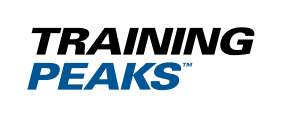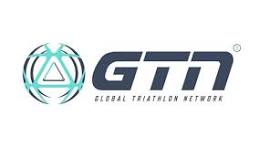Triathlon Training Plans

"Very well structured and designed to aid you to get a good balance in between training and recovery."
Ignacio Vilas Eguileta - IRONMAN 70.3
Compatible with over 100 apps & devices, including:
Compatible with over 100
apps & devices, including:
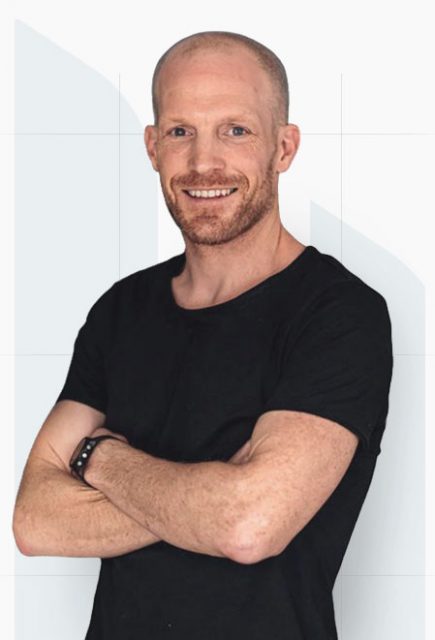
Head Coach & Founder: Phil Mosley
Why Use Our Training Plans?

Flexible, structured training for any level
Research-backed plans for any experience-level that fit around your lifestyle. From leading endurance coach Phil Mosley.

The world's best training app
We use TrainingPeaks for personalised training zones, trackable progress and so much more - on any major training device.

Certified coach support (rated 4.9/5)
On top of full help-centre & FAQ support (with videos), our coaches will quickly reply to any questions you have about your plan via email!
1. Choose from over 270 plans from 4-48 weeks long
With beginner, intermediate, advanced, masters (40+) and off-season plans – we’ll have the perfect one for you.
2. Activate your free TrainingPeaks™️ account
A flexible calendar, targeted training zones, trackable progress and so much more – on any device.
3. Get your online plan and start ticking off sessions!
Keep motivated with any of your training questions answered quickly by our team of certified coaches!
About Phil Mosley
Phil is a recognised expert with over 20 years of experience, having featured on many endurance sports publications. He founded MyProCoach in 2010 to to offer the world’s most comprehensive range of online training plans, all designed to help you enjoy the same success that himself and his athletes have, while still making sure you have quality time for your family, friends and career.
Including beginner, intermediate, advanced, masters (40+) and off-season PLANS
Join Over 40,000 Successful Athletes
-
 Ignacio Vilas EguiletaIRONMAN, December 2019very well structured plans I have used already Ironman 140.6 and 70.3 plans from Myprocoach and I really like the thinking behind the training schedule and sessions. It is very well structured and designed to aid you to get a good balance in between training and recovery. And one of the greatest things I... >> read moreI have used already Ironman 140.6 and 70.3 plans from Myprocoach and I really like the thinking behind the training schedule and sessions. It is very well structured and designed to aid you to get a good balance in between training and recovery. And one of the greatest things I have realized this year when using the same plan for the second time is that it was updated automatically, so some workouts were new and different. That helps with getting motivation forward. On top of it, you have great and quick support by email from the Myprocoach team when needed. << read less07 Dec 2019
Ignacio Vilas EguiletaIRONMAN, December 2019very well structured plans I have used already Ironman 140.6 and 70.3 plans from Myprocoach and I really like the thinking behind the training schedule and sessions. It is very well structured and designed to aid you to get a good balance in between training and recovery. And one of the greatest things I... >> read moreI have used already Ironman 140.6 and 70.3 plans from Myprocoach and I really like the thinking behind the training schedule and sessions. It is very well structured and designed to aid you to get a good balance in between training and recovery. And one of the greatest things I have realized this year when using the same plan for the second time is that it was updated automatically, so some workouts were new and different. That helps with getting motivation forward. On top of it, you have great and quick support by email from the Myprocoach team when needed. << read less07 Dec 2019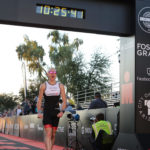 MikeIRONMAN 140.6, December 2019100% Worth the Money Used the Advanced 40-week IRONMAN plan and absolutely loved it! I was between the Intermediate and Advanced plans, but with the support/advice from the coaches, I was confidently able to purchase the plan that best suited my goals. The one thing about this plan that stood out to me was... >> read moreUsed the Advanced 40-week IRONMAN plan and absolutely loved it! I was between the Intermediate and Advanced plans, but with the support/advice from the coaches, I was confidently able to purchase the plan that best suited my goals. The one thing about this plan that stood out to me was the organization: this plan works excellently for those busy during the weekdays. I was able to complete 85-90% of the workouts in medical school and during residency interview season, which I was extremely happy with. Second, there is a good balance with this plan because I never felt totally burnt out. There were some occasions I skipped a workout because I was feeling tired/fatigued. But overall, I never felt run into the ground--the plan is forgiving in that way. On the other hand, I felt FAR MORE physically prepared for this race than my first Ironman where I followed a different plan. And side note, the email support system was quick and helpful too! << read less03 Dec 2019
MikeIRONMAN 140.6, December 2019100% Worth the Money Used the Advanced 40-week IRONMAN plan and absolutely loved it! I was between the Intermediate and Advanced plans, but with the support/advice from the coaches, I was confidently able to purchase the plan that best suited my goals. The one thing about this plan that stood out to me was... >> read moreUsed the Advanced 40-week IRONMAN plan and absolutely loved it! I was between the Intermediate and Advanced plans, but with the support/advice from the coaches, I was confidently able to purchase the plan that best suited my goals. The one thing about this plan that stood out to me was the organization: this plan works excellently for those busy during the weekdays. I was able to complete 85-90% of the workouts in medical school and during residency interview season, which I was extremely happy with. Second, there is a good balance with this plan because I never felt totally burnt out. There were some occasions I skipped a workout because I was feeling tired/fatigued. But overall, I never felt run into the ground--the plan is forgiving in that way. On the other hand, I felt FAR MORE physically prepared for this race than my first Ironman where I followed a different plan. And side note, the email support system was quick and helpful too! << read less03 Dec 2019 David SchwanIRONMAN 70.3 for Masters, November 2019Very Good Plan/Holistic approach Only 5 weeks into the training plan, but love so far. The only addition I would include is a plan that includes power for running and it would be perfect. Pic-Last season, 1st in the age group.15 Nov 2019
David SchwanIRONMAN 70.3 for Masters, November 2019Very Good Plan/Holistic approach Only 5 weeks into the training plan, but love so far. The only addition I would include is a plan that includes power for running and it would be perfect. Pic-Last season, 1st in the age group.15 Nov 2019
"We are grateful for this feedback and are currently researching the best way to... >> read moreOnly 5 weeks into the training plan, but love so far. The only addition I would include is a plan that includes power for running and it would be perfect. Pic-Last season, 1st in the age group.
"We are grateful for this feedback and are currently researching the best way to add power-based run workouts to our plans - My Pro Coach" << read less -
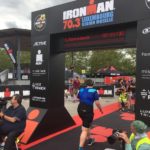 Christina RoehrenbeckIronman 70.3 Luxemburg, July 2019Perfect plan for my first 70.3 I used Phil's Novice 70.3 plan (28 weeks) to prepare for my first ever 70.3 in Luxemburg. My goal: finish with a smile. Being a slower athlete (sometimes THE slowest) I always struggled with finding a plan that would fit my needs: it would have to take my slower paces... >> read moreI used Phil's Novice 70.3 plan (28 weeks) to prepare for my first ever 70.3 in Luxemburg. My goal: finish with a smile. Being a slower athlete (sometimes THE slowest) I always struggled with finding a plan that would fit my needs: it would have to take my slower paces into account but still would have to prepare me for a race longer than 7 hours. It actually was my first plan I purchased from Phil. It worked out perfectly for me! Distances and duration, even of the longer sessions, were totally fine for me and when needed paces and the plan itself were adjustable to my needs. Still, I was training for a middle distance so there definetely is some work to do but it was totally managable, also in between my every day life and job. And after some ups and downs on race day I crossed the finish line in Luxemburg. << read less23 Jul 2019
Christina RoehrenbeckIronman 70.3 Luxemburg, July 2019Perfect plan for my first 70.3 I used Phil's Novice 70.3 plan (28 weeks) to prepare for my first ever 70.3 in Luxemburg. My goal: finish with a smile. Being a slower athlete (sometimes THE slowest) I always struggled with finding a plan that would fit my needs: it would have to take my slower paces... >> read moreI used Phil's Novice 70.3 plan (28 weeks) to prepare for my first ever 70.3 in Luxemburg. My goal: finish with a smile. Being a slower athlete (sometimes THE slowest) I always struggled with finding a plan that would fit my needs: it would have to take my slower paces into account but still would have to prepare me for a race longer than 7 hours. It actually was my first plan I purchased from Phil. It worked out perfectly for me! Distances and duration, even of the longer sessions, were totally fine for me and when needed paces and the plan itself were adjustable to my needs. Still, I was training for a middle distance so there definetely is some work to do but it was totally managable, also in between my every day life and job. And after some ups and downs on race day I crossed the finish line in Luxemburg. << read less23 Jul 2019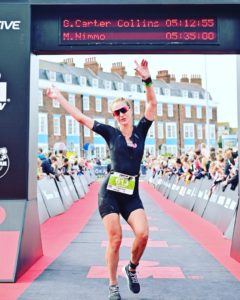 Gemma Carter CollinsIronman 70.3 Weymouth, September 2019Manageable plans for a working mum I have been using My Pro Coach’s training plans since 2015, when I entered a standard duathlon - my first - a year after the birth of my second child. I’ve since followed My Pro Coach plans for sprint duathlon and half marathon - and, most recently, intermediate 70.3 training.... >> read moreI have been using My Pro Coach’s training plans since 2015, when I entered a standard duathlon - my first - a year after the birth of my second child. I’ve since followed My Pro Coach plans for sprint duathlon and half marathon - and, most recently, intermediate 70.3 training.30 Sep 2019
Gemma Carter CollinsIronman 70.3 Weymouth, September 2019Manageable plans for a working mum I have been using My Pro Coach’s training plans since 2015, when I entered a standard duathlon - my first - a year after the birth of my second child. I’ve since followed My Pro Coach plans for sprint duathlon and half marathon - and, most recently, intermediate 70.3 training.... >> read moreI have been using My Pro Coach’s training plans since 2015, when I entered a standard duathlon - my first - a year after the birth of my second child. I’ve since followed My Pro Coach plans for sprint duathlon and half marathon - and, most recently, intermediate 70.3 training.30 Sep 2019
And, they’ve all delivered results I could not have achieved alone (2nd female overall in the Chilham Castle Duathlon, 1st female overall and course record for the Chilham Castle Sprint Duathlon, 3rd female overall for the Bedgebury Half Marathon and 5th female 40-45 at Weymouth 70.3 - my first ever 70.3.)
I was drawn to the plans, initially, because they are easy to follow and very manageable for a working-mum who still wants to train.
The most recent plan - Intermediate Half Ironman - has been my favourite yet. The sessions are quality over quantity, and this works well when I’m juggling so much else. I’ve loved how the My Pro Coach team’s experience is transferred into this plan and, without realising, worked me into a physically-ready position for race day. I was never fazed by the 70.3 task because I trusted their process!
I’m hugely hugely grateful. The support - personal, interested support - has been a huge motivator.
Thank you. << read less JanSprint/Olympic Triathlon, July 2019Masters triathlon win win ! I can highly recommend Phils training plans . I have been on a training plan for the last year with exceptional results , I’m not new to the sport 16 years and now in the masters category. The training plan gives me a more balanced life and no niggles !!!... >> read moreI can highly recommend Phils training plans . I have been on a training plan for the last year with exceptional results , I’m not new to the sport 16 years and now in the masters category. The training plan gives me a more balanced life and no niggles !!! In the last year I have won every race I entered, feeling fresh and have a stronger endurance speed base . At 64 im racing as I did in my 40’s . So thanks Phil , I'm looking forward to my next race ! Jan << read less02 Jul 2019
JanSprint/Olympic Triathlon, July 2019Masters triathlon win win ! I can highly recommend Phils training plans . I have been on a training plan for the last year with exceptional results , I’m not new to the sport 16 years and now in the masters category. The training plan gives me a more balanced life and no niggles !!!... >> read moreI can highly recommend Phils training plans . I have been on a training plan for the last year with exceptional results , I’m not new to the sport 16 years and now in the masters category. The training plan gives me a more balanced life and no niggles !!! In the last year I have won every race I entered, feeling fresh and have a stronger endurance speed base . At 64 im racing as I did in my 40’s . So thanks Phil , I'm looking forward to my next race ! Jan << read less02 Jul 2019 -
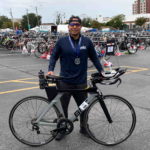 Andres MorenoIRONMAN 70.3, October 2019Great 20 weeks of training I got the 20 Weeks IronMan 70.3 Beginner plan and it worked perfectly for me. This was my first ever half distance triathlon and I was able to get the right fitness for the event. The plan has a great structure, the intensity of the workouts is just right and... >> read moreI got the 20 Weeks IronMan 70.3 Beginner plan and it worked perfectly for me. This was my first ever half distance triathlon and I was able to get the right fitness for the event. The plan has a great structure, the intensity of the workouts is just right and the duration was good enough to still have time for other activities. I completed the race and I couldn't be more satisfied with the training plan. << read less24 Oct 2019
Andres MorenoIRONMAN 70.3, October 2019Great 20 weeks of training I got the 20 Weeks IronMan 70.3 Beginner plan and it worked perfectly for me. This was my first ever half distance triathlon and I was able to get the right fitness for the event. The plan has a great structure, the intensity of the workouts is just right and... >> read moreI got the 20 Weeks IronMan 70.3 Beginner plan and it worked perfectly for me. This was my first ever half distance triathlon and I was able to get the right fitness for the event. The plan has a great structure, the intensity of the workouts is just right and the duration was good enough to still have time for other activities. I completed the race and I couldn't be more satisfied with the training plan. << read less24 Oct 2019 Dan ForerIRONMAN 70.3, May 2020Quality: Intermediate 70.3 Quality Ironman 70.3 intermediate plan. I recommend it! I’m an amateur with 10yrs of competitive Tri and duathlon racing at world level in the past. I’m also experienced in training with no plan and a few extra kgs - this doesn’t work. I’ve trained in squads, on generic plans, dedicated... >> read moreQuality Ironman 70.3 intermediate plan. I recommend it! I’m an amateur with 10yrs of competitive Tri and duathlon racing at world level in the past. I’m also experienced in training with no plan and a few extra kgs - this doesn’t work. I’ve trained in squads, on generic plans, dedicated one-to-one coaching in that time with various approaches from sprint to full Ironman. So I’ve seen a lot what what is out there. This plan is quality. On reading I could tell it was very good. The difficulty as intermediate is well placed. Its suitable challenging for someone with racing background but who’s been out of the game for a short while too. The plan is centred around initial tests to baseline your ability, so in this regard it is personalised to your ability. As the athlete, you must still use your smarts to listen to your body when training but on this plan I felt the fatigue was always well managed. The plan in Training Peaks is brilliant. Full description of each session automatically customised to the required intensity using your previous test results. The plan is also periodised into build and peak phases with a clear distinction in the type of training in each phase with progressive adaptation of sessions within the phases. It’s very well thought out. You are also able to re-use the plan in Training Peaks which is ideal especially when unforeseen events occur like race cancellations and you need to restart or just aim for another race date. The results. I’ve seen significant improvements across swim, bike and run. Biggest gains being on the bike! I’ve also followed the strength and conditioning sessions in the plan so injury prevention and support for better person is handled by this aspect. The team is also very supportive and motivating via social channels. They really take an interest in the athletes who purchase their plans. So be sure to follow myprocoach on FB and insta. I highly recommended this plan, so get it and shift your attention to picking the race now! << read less21 May 2020
Dan ForerIRONMAN 70.3, May 2020Quality: Intermediate 70.3 Quality Ironman 70.3 intermediate plan. I recommend it! I’m an amateur with 10yrs of competitive Tri and duathlon racing at world level in the past. I’m also experienced in training with no plan and a few extra kgs - this doesn’t work. I’ve trained in squads, on generic plans, dedicated... >> read moreQuality Ironman 70.3 intermediate plan. I recommend it! I’m an amateur with 10yrs of competitive Tri and duathlon racing at world level in the past. I’m also experienced in training with no plan and a few extra kgs - this doesn’t work. I’ve trained in squads, on generic plans, dedicated one-to-one coaching in that time with various approaches from sprint to full Ironman. So I’ve seen a lot what what is out there. This plan is quality. On reading I could tell it was very good. The difficulty as intermediate is well placed. Its suitable challenging for someone with racing background but who’s been out of the game for a short while too. The plan is centred around initial tests to baseline your ability, so in this regard it is personalised to your ability. As the athlete, you must still use your smarts to listen to your body when training but on this plan I felt the fatigue was always well managed. The plan in Training Peaks is brilliant. Full description of each session automatically customised to the required intensity using your previous test results. The plan is also periodised into build and peak phases with a clear distinction in the type of training in each phase with progressive adaptation of sessions within the phases. It’s very well thought out. You are also able to re-use the plan in Training Peaks which is ideal especially when unforeseen events occur like race cancellations and you need to restart or just aim for another race date. The results. I’ve seen significant improvements across swim, bike and run. Biggest gains being on the bike! I’ve also followed the strength and conditioning sessions in the plan so injury prevention and support for better person is handled by this aspect. The team is also very supportive and motivating via social channels. They really take an interest in the athletes who purchase their plans. So be sure to follow myprocoach on FB and insta. I highly recommended this plan, so get it and shift your attention to picking the race now! << read less21 May 2020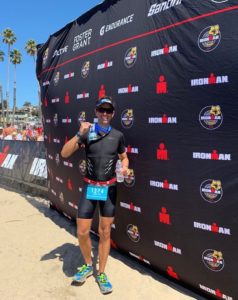 Sebastian BeharIronman 70.3, September 2019Great Plan I completed my first two IM70.3 (Santa Rosa and Santa Cruz 2019) with Phil's Intermediate IRONMAN 70.3 - 32 Weeks plan, both under 5 hours and 25 minutes. What’s great? Easy to follow, structured workouts, access to articles and tips, and that you can use it multiple times.10 Sep 2019
Sebastian BeharIronman 70.3, September 2019Great Plan I completed my first two IM70.3 (Santa Rosa and Santa Cruz 2019) with Phil's Intermediate IRONMAN 70.3 - 32 Weeks plan, both under 5 hours and 25 minutes. What’s great? Easy to follow, structured workouts, access to articles and tips, and that you can use it multiple times.10 Sep 2019
A Growing Community Of Athletes
*on average athletes use their plan twice (our plans can be activated multiple times for free)
Kickstart Your Training Today!
Choose your premium training plan, download the TrainingPeaks app and start ticking off sessions!



